NORTH WALES COAST RAILWAY:NOTICE BOARD
Rheilffordd arfordir gogledd Cymru: Hysbysfwrdd
27 April 2020
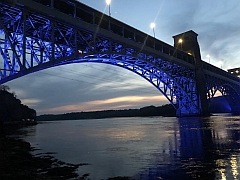
An iconic structures salutes the NHS, 23 April.
Forthcoming events
(see also our Calendar page for venues)
Note: we have removed all entries up to the end of May as the events are cancelled.
June 2020
Saturday 27 June Steam at Chester The Cheshireman (Railway Touring Company). 60163 London Euston - Chester and return.
July 2020
Sunday 19 July Steam on the Coast North Wales Coast Express (Railway Touring Company) LIverpool - Manchester - Holyhead (15:05 - 17:40).
Tuesday 21 July Steam on the Coast The Welsh Mountaineer (Railway Touring Company) Preston - Blaenau Ffestiniog and return
August 2020
September 2020
Saturday 5 September Steam at Chester 'The Cheshireman' (Railway Touring Company). Norwich to Chester. Loco 6233 for part of the journey.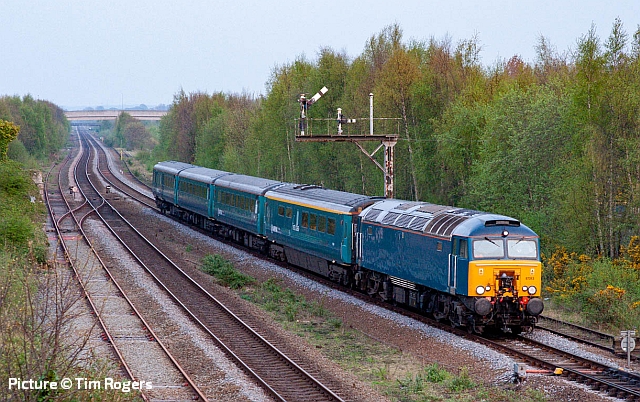
On 17 April 2009, 57 313 passes Holywell Junction with train 1W91 16:17 Cardiff Central to Holyhead.
Yet another collection of historic scenes ... and look out on Friday morning 1 May for another extra issue. Thanks as always to all contributors.- Charlie
The Cambrian Coast goods - by Paul Shannon
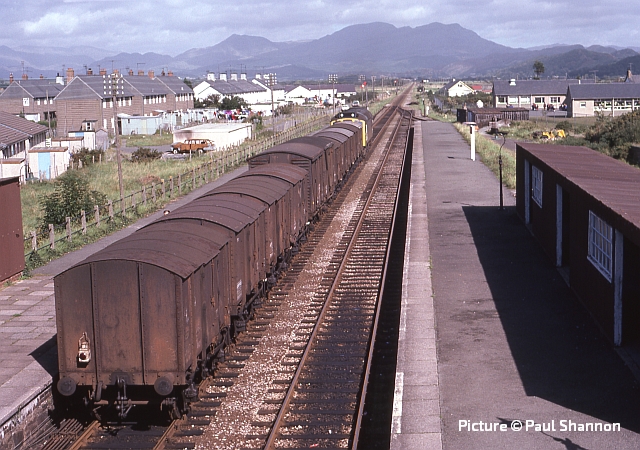
The Cambrian Coast line was one of the last in the UK to feature the traditional daily 'pick-up' goods. These pictures were taken in 1978. Above, on 25 September 25 252 passes Harlech with empty gunpowder vans for Penrhyndeudraeth, and a couple of normal vans which probably carried fertiliser...
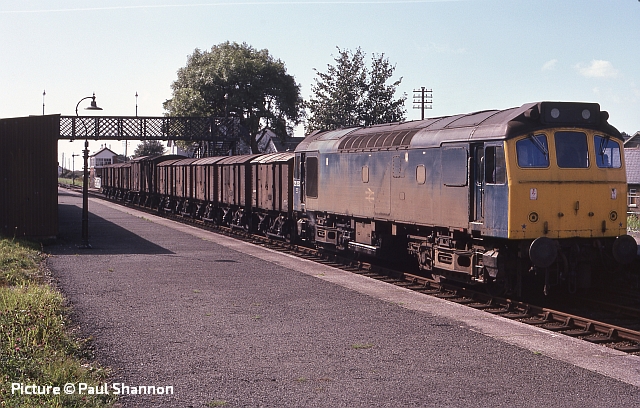
... at least one of the gunpowder vans had originated at Llantrisant. No > brake van was necessary by this date because the wagons were all vacuum-brake fitted.
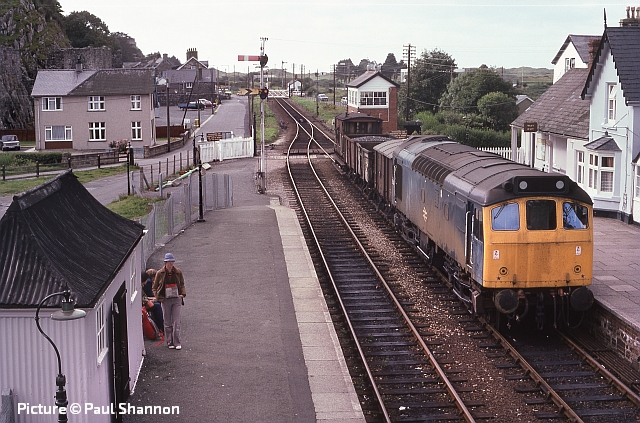
The next day, 26 September, 25 325 is hauling one empty gunpowder van for Penrhyndeudraeth, one no-vacuum-fitted 16-ton mineral wagon with coal from Gwaun-cae-Gurwen to Porthmadog and one vacuum-fitted coal wagon from Gwaun-cae-Gurwen to Pwllheli ...
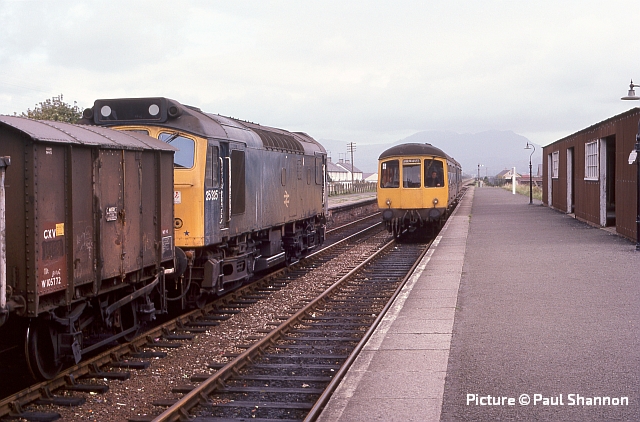
... Class 103 'Park Royal' unit M56164 + M50398 enters the passing loop with a train from Pwllheli. The gunpoweder vans were given the TOPS code CXV, the C (covered bulk wagons) distinguished them for ordinary vans with codes beginning with 'V'.
Looking back: building the A55 road - with Jim Johnson
Here is a response to the a request from Gary Connor for pictures taken during the construction of the A55 North Wales Expressway in the 1980s, which imapcted on the railway route in a number of places.
 |
|
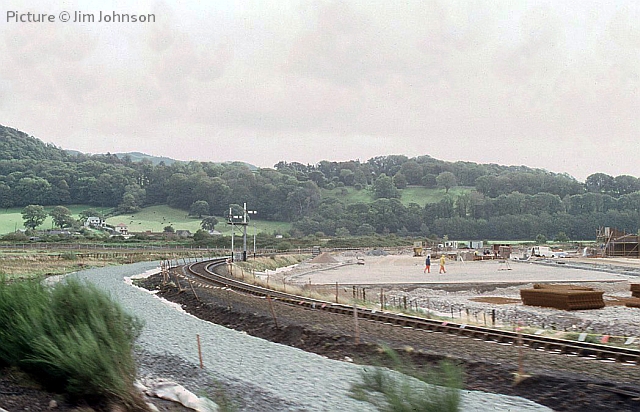
Prior to this, construction started on a new goods yard at Llandudno Junction, to replace the doomed Colwyn Bay facility, which would be swept away by the new A55. The new alignment of the Blaenau branch is also visible. 7 October 1980. During construction of the new road, a siding and discharge point was installed at Llandudno Junction for fly-ash from Fiddlers Ferry power station.
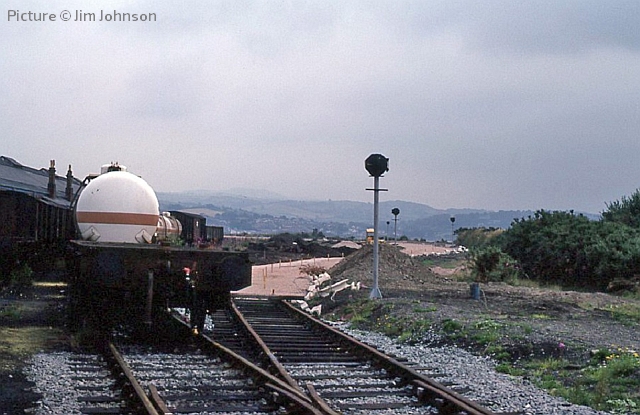
The start of the new fly-ash siding, under construction. at the side of the depot. Marker signals can be seen along the new alignment. 31 July 1982.
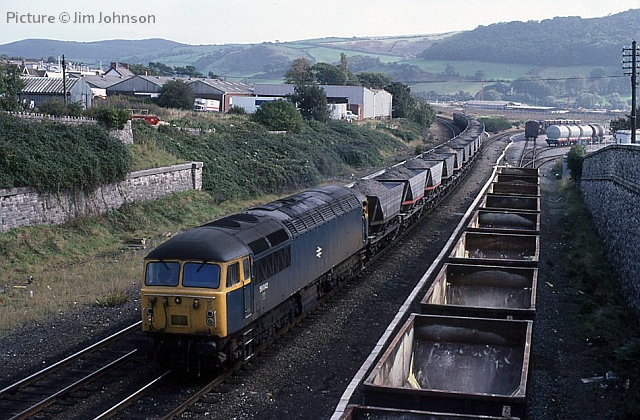
56 042 arriving at the Junction, with flyash from Fiddlers Ferry. 8 October 1982.
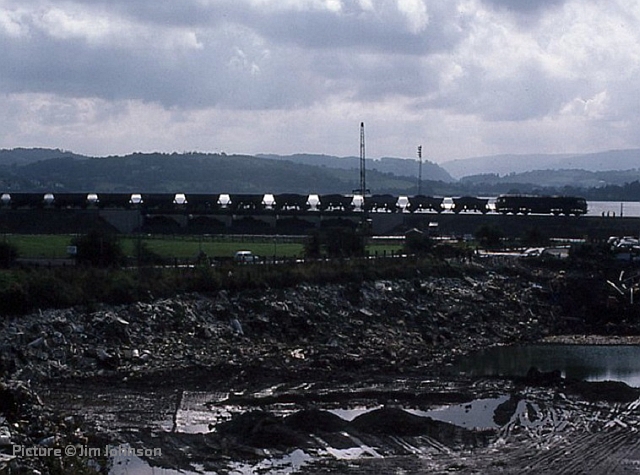
The same train on the fly-ash discharge point ...
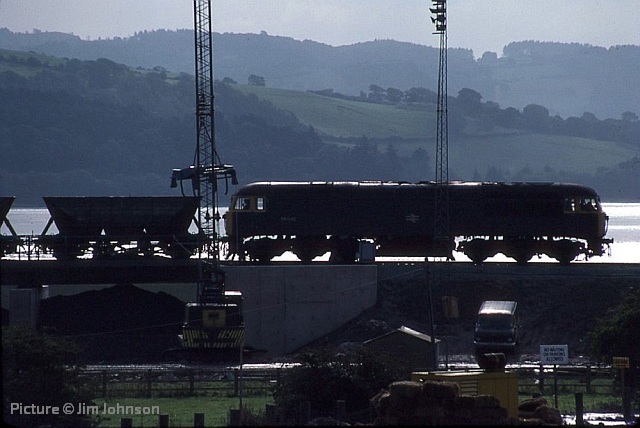
...having propelled the train along the new siding. 8 October 1982.
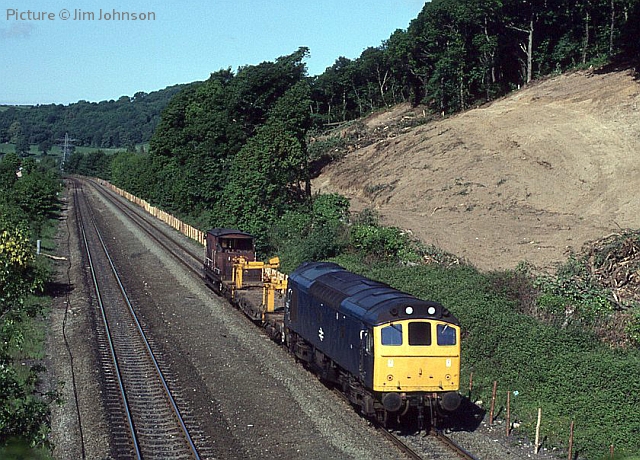
25 323 with an Engineer's train, approaching Tan-y-Bryn bridge, on the old formation. Digging out of the hillside to the right has started, where the new formation will be laid. 29 May 1982.
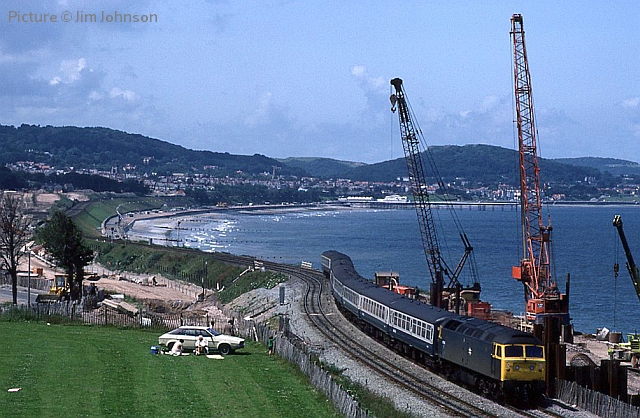
47 242 approaching Penmaenrhos Tunnel with the 12:30 (SO) Llandudno - Nottingham, normally a Class 25 working. 3 July 1982.
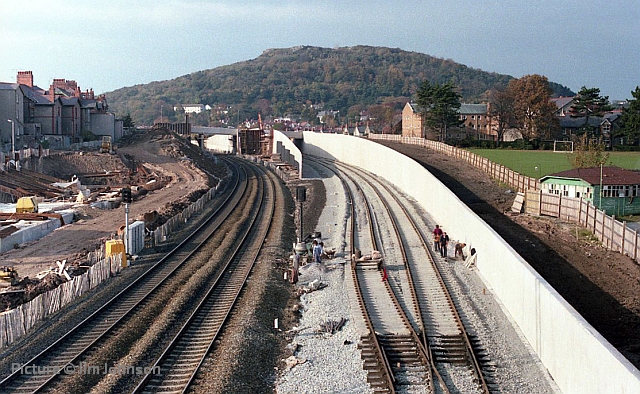
Old and new alignments at Colwyn Bay. 6 November 1983.
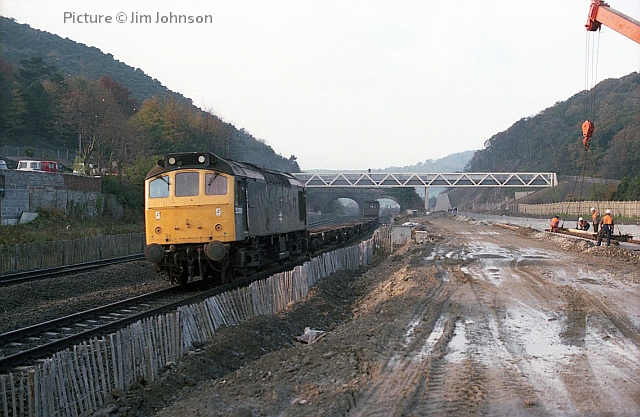
25 209 with up Freightliner flats near Mochdre, taken from the new alignment. 8 November 1983
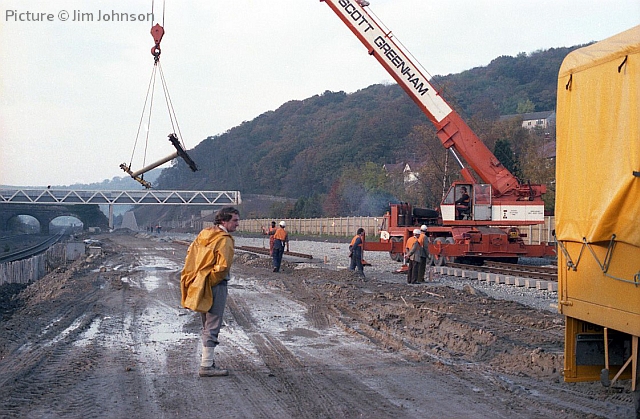
New alignment near Mochdre. The late Edmund Williams is in the yellow coat. Thanks to his kindness, I was given privileged access to many of the
locations. 8 November 1983.
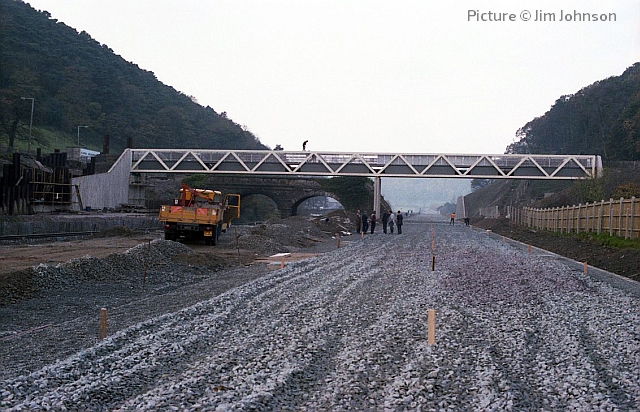
New alignment near Mochdre. 8 November 1983.
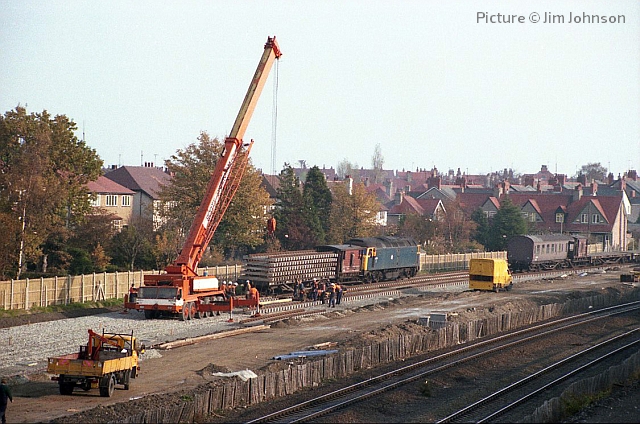
47 298 with track panels at Colwyn Bay. Notethe LMS brake van and coach. 8 November 1983.
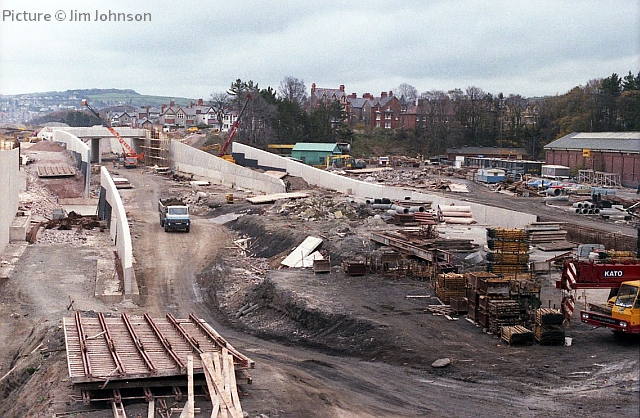
Colwyn Bay goods yard site. 16 November 1983.
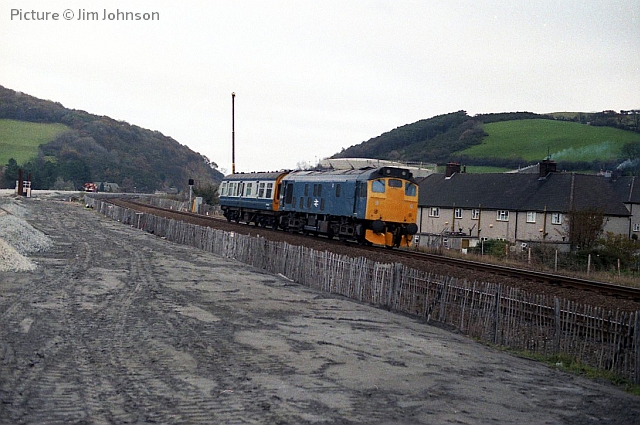
25 224 near Mochdre ...
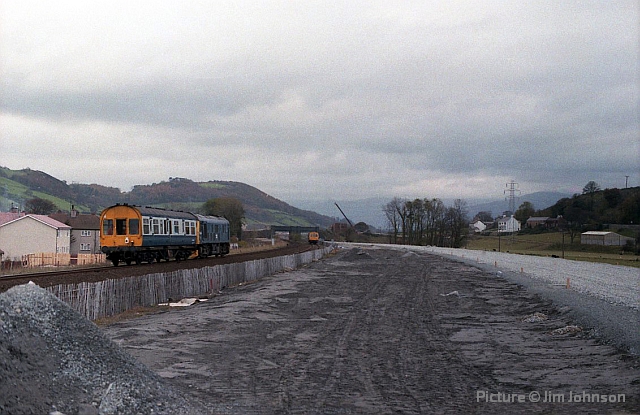
... with Inspection Saloon DM45029. 16 November 1983.
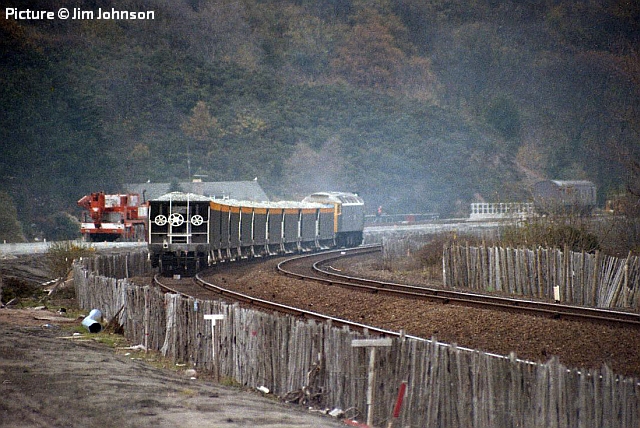
47 363 with ballast from Penmaenmawr, destined for the new alignment. 16 November 83.
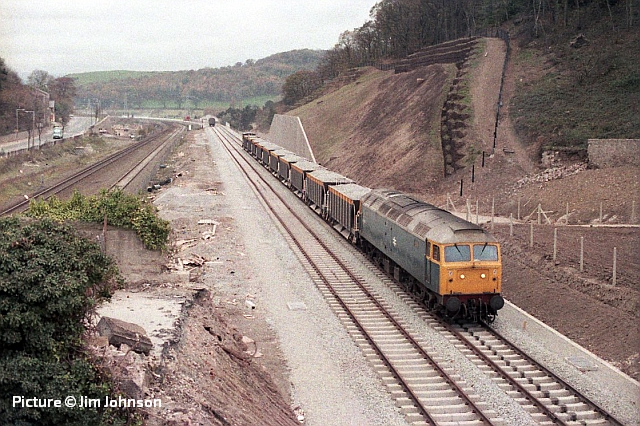
47 363 after accessing the new alignment. 16 November 83.
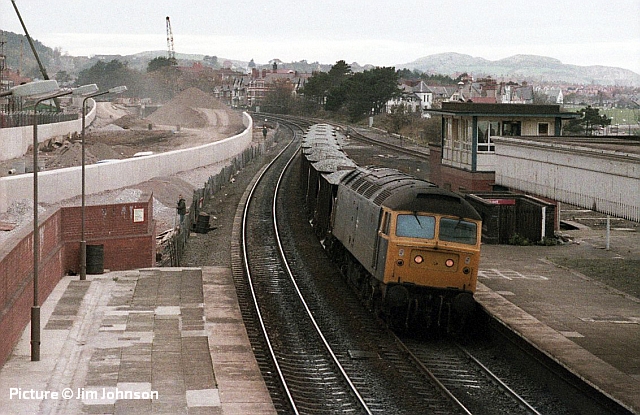
47 331 passing Colwyn Bay signalbox with ballast from Penmaenmawr. This load was not for the new alignment. 16 November 1983.
703 Centenary Special to Chester 1976 - by Peter Neve
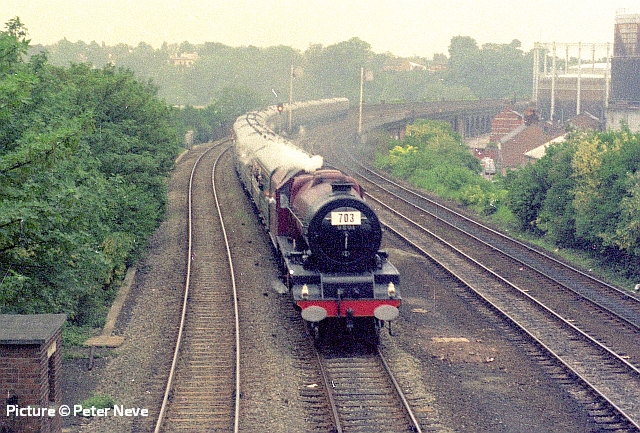
Sir William A. Stanier FRS (Chief Mechanical Engineer to the L.M.S.) was born on the 27 May 1876. To commemorate the centenary of his birth, a special excursion was arranged using one of his locomotives. The special started at Hereford, where 6201 Princess Elizabeth was based at the time. The headboard of 703 was chosen because this was the headboard code of the record breaking run in November 1936 when one of the class travelled non-stop from London Euston to Glasgow. There is a report that Robert Riddles was on the footplate at the time of the special in 1976.
Above, Princess Elizabeth approaches Northgate locks as it hauls the 703 Centenary Special train over the viaduct between Chester Racecourse and the gas holders. In the background can be seen a mixture of colour light signals and semaphore signals with white background sighting screens.
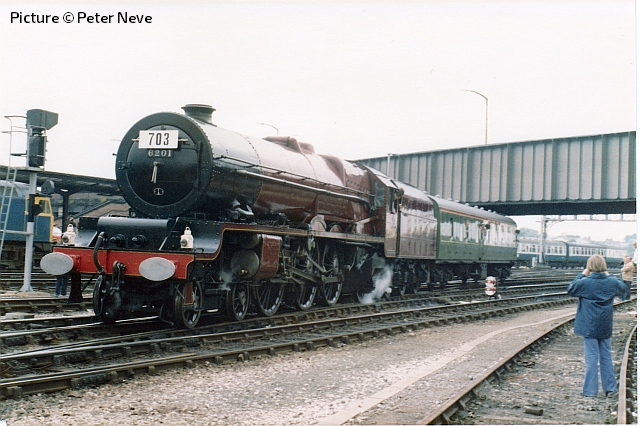
6201 has been fuelled and watered and is propelling its support coach on to the triangle on the far side of Hoole Road bridge to be turned.
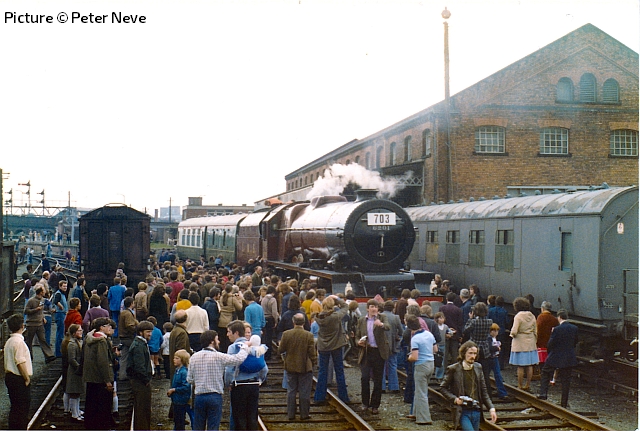
6201 has been parked adjacent to the old goods warehouse (later destroyed in a fire) and awaits the attention of its support crew.
I believe this was only 6201’s second mainline outing since the end of steam in 1968 and attracted considerable public interest, as the photographs show. There appears to be scant regard for Health and Safety, with children and even a policeman standing on the running lines. This behaviour would not be tolerated in the present day (notwithstanding the rails are electrified!).
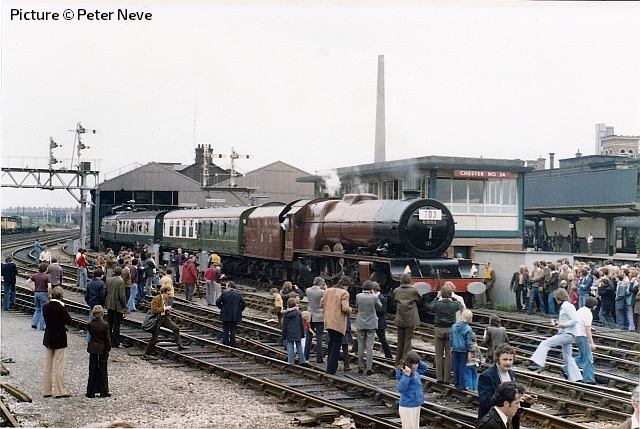
6201 is backing on to its train standing in platform 7 as it passes Chester’s no. 3A signal box. These photographs are a selection from about a dozen or so I took on the day. I think there is also a fashion statement to be found within some of the photographs!
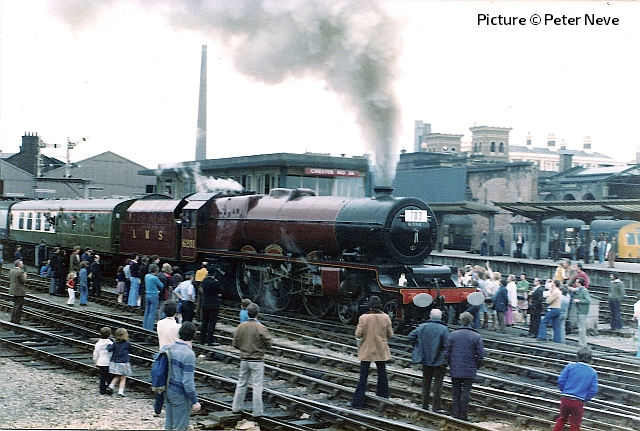
6201 threads the Centenary Special between the throng of spectators on the return leg back to Hereford.
A Feast of 31s - pictures by Dave Sallery
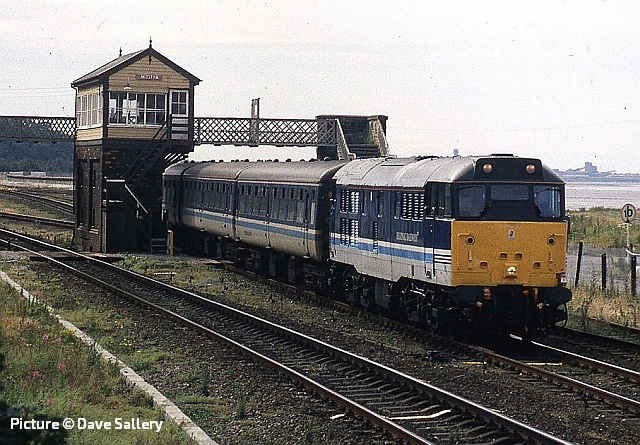
31 410 passes Mostyn on 8 July 1992. The early to mid 90s saw a variety of Class 31 locos making their way down the Coast, on passenger, ballast and nuclear flask workings.
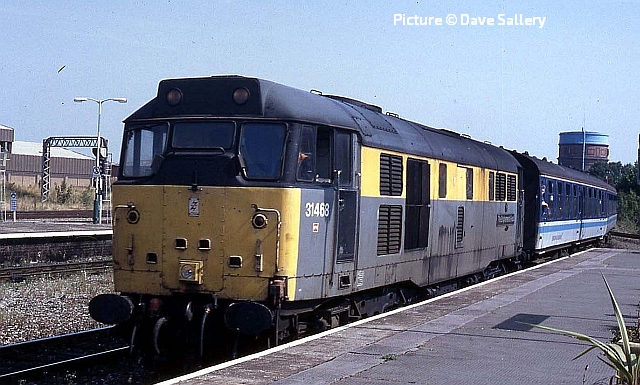
Chester on 16 August 1995, with 31 468 The Enginemens' Fund in 'engineer's Dutch' livery, although an electric-heat fitted loco.
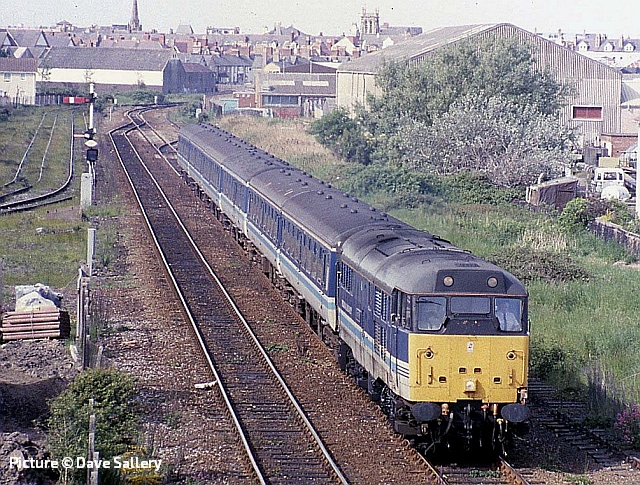
31 421 departing from Llandudno, 5 June 1993.
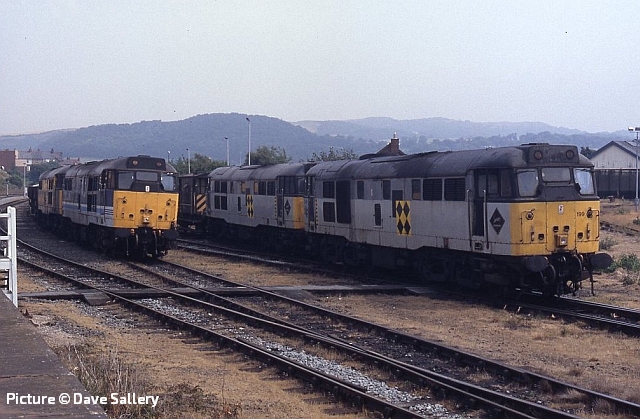
A gathering of 31s at Llandudno Junction on 10 July 1995. 31 439 , 31 119, 31 275, and 37 199.
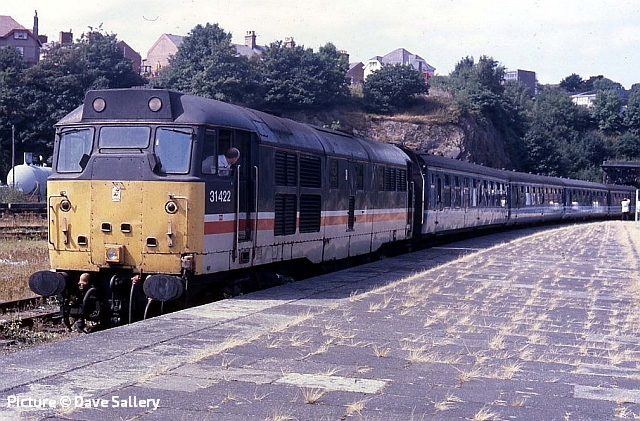
31 422 calls at Bangor, 16 August 1995.
A steam special selection (part 1) - pictures by David Pool
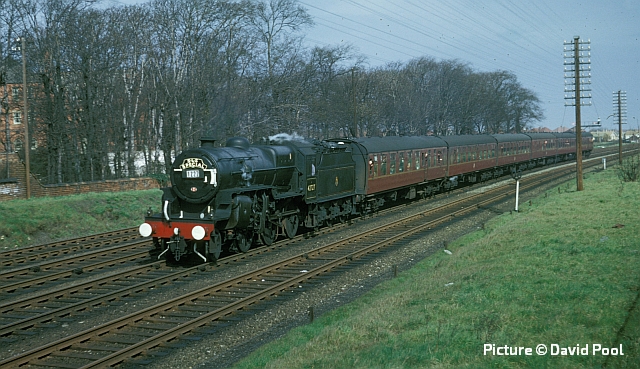
On 27 March 1966 the Stephenson Locomotive Society ran a Railtour from Birmingham Snow Hill to Llandudno Junction. “Crab” 42727 is approaching Rhyl with a reporting code 1Z27, suitably cleaned for the occasion.
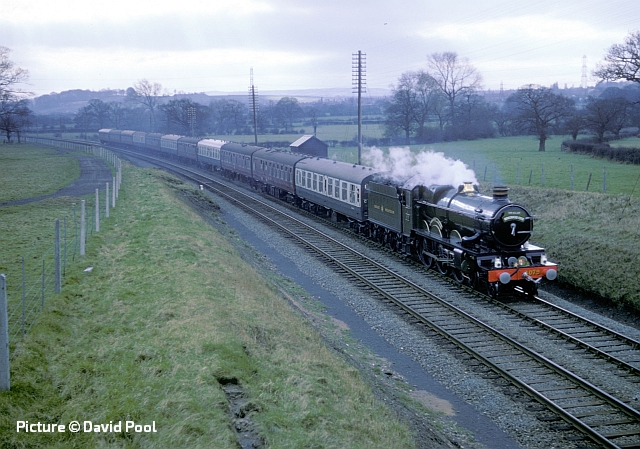
4079 Pendennis Castle was used for a few railtours before it was shipped to Australia – although now repatriated to the UK. On 4 March 1967 there were two separate trains (The Zulu and The Birkenhead Flyer) to mark the end of through services from Birkenhead Woodside to London Paddington. 4079 is working 1X82, the 08:25 Flyer from Paddington, at Johnstown near Wrexham.
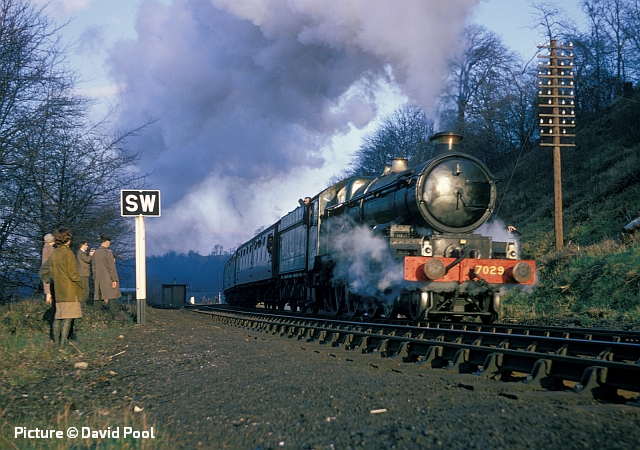
The second locomotive used on 4 March 1967 was 7029 Clun Castle, working 1Z83, the 15:37 from Birkenhead (The Zulu). The sight and sound of 7029 tackling Gresford Bank was memorable.
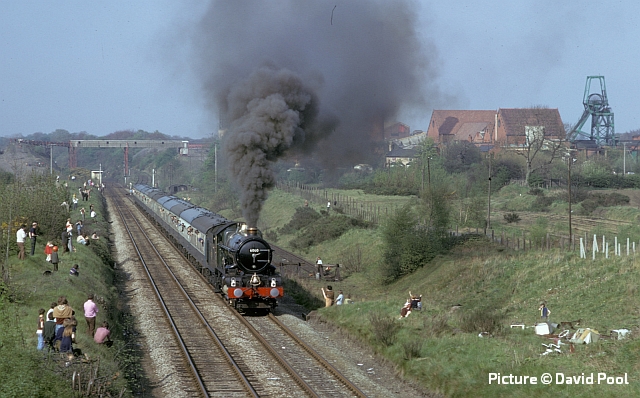
Another red letter day for Gresford was on 26 April 1975, when 6000 King George V was permitted to run north of Wolverhampton, having been banned from the route in BR days due to a weight restriction. Again, two locomotives (6000 and 35028 Clan Line) were involved with separate Railtours to Chester, this time exchanging locomotives on the return journey. 6000 has the Merchant Navy Locomotive Preservation Society’s 16:00 Chester to Paddington, passing the site of Gresford Colliery.
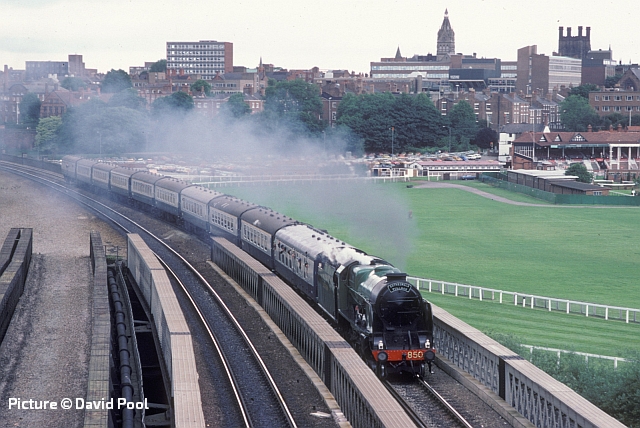
Southern Railway 850 Lord Nelson was frequently used on Railtours in 1981. On 13 June it was leaving Chester for Hereford on the Cathedrals Express. I have not found any information on the timings for this day.
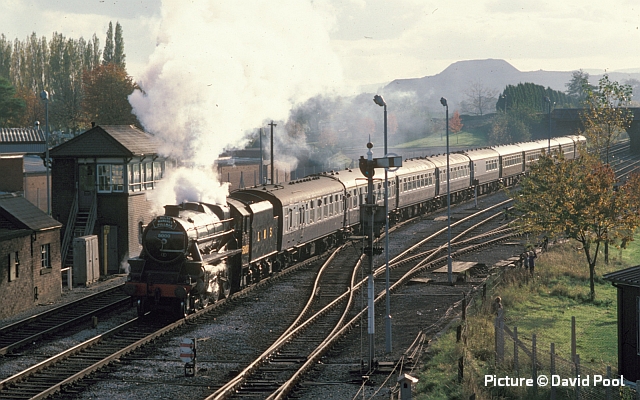
The LMS Class 5 No.5000 was occasionally used on Railtours, and on 23 October 1982 it was passing Wrexham Croes Newydd with a Welsh Marches Pullman to Chester. It is not clear whether 5000 worked from Hereford or from Shrewsbury.
Trawsfynydd flasks remembered - pictures by Trefor Davies
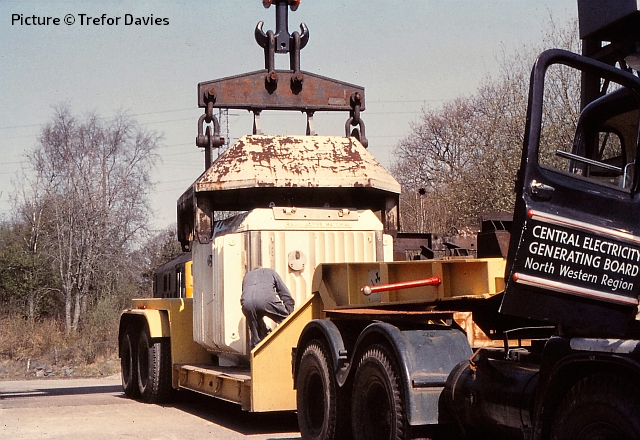
Ken Robinson writes: 'Three photographs taken by a good friend of mine, the late Trefor Davies, who worked at Trawsfynydd Power Station 1963 - 1993. He took these around 1973-74 I believe, and they show the various stages of the flask being loaded at the railhead.' The first (above) shows the crane unloading the flask - the cab door shows details of the company that ran the Power Station during those early years. The lorry was a Foden S21 three-axle two cylinder diesel engine capable of pulling loads up to 50 tons. It was new to Trawsfynydd in 1963 and was sold around 1988. It is still around apparently - preserved and privately owned!
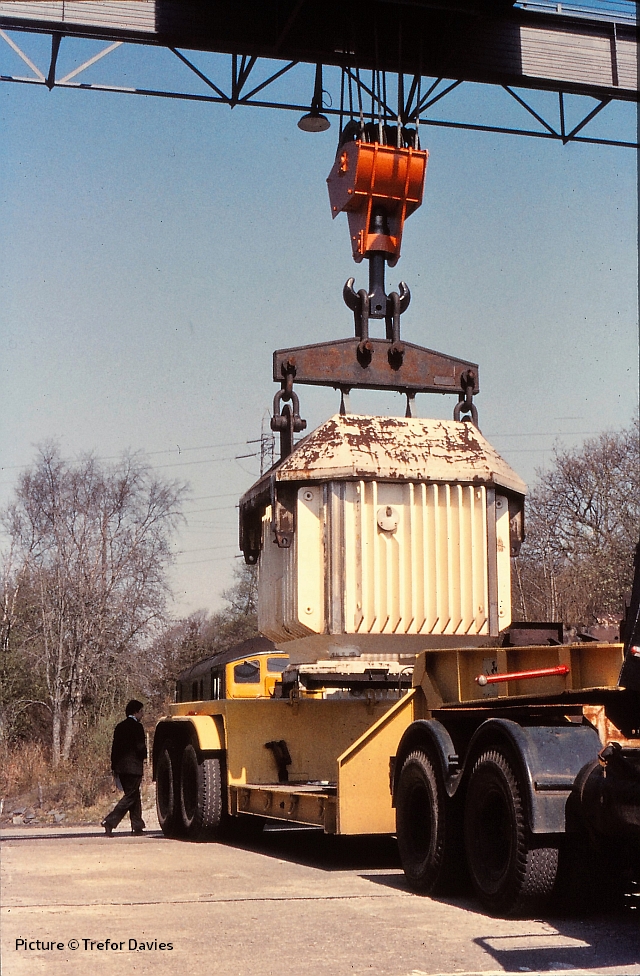
The second shows the flask being unloaded off the lorry trailer with the locomotive waiting in the background to take the flask down to Llandudno Junction.
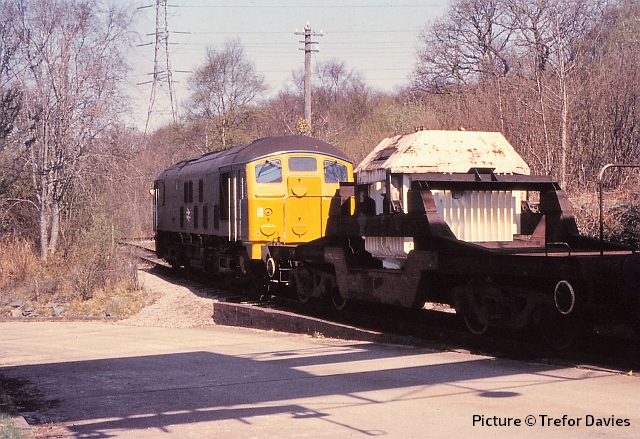
The third sees the class 24 (unidentified, sadly) ready to depart with what appears to be a single flask. The wagon is believed to be the second type of flask wagon which had two axled bogies, as opposed to the initial 'Flatrol MJ' wagons which had three-axled bogies.
Alison Revisited - by Geoff Monks
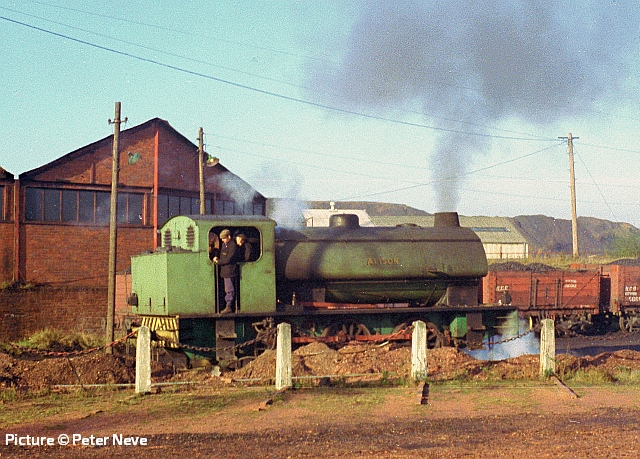
As an ex-NCB person I can enlarge on the history of locomotive Alison mentioned by Peter Neve (picture reprised above) in the last issue. The loco has an interesting history.
With works number Hunslet 3163/1944, it was new to the War Department as their No. 75113, later No. 132 and named Sapper. It was sold by the WD to the Hunslet Engine Co. in 1962 after being stationed at several WD depots around the UK, being one of fifteen ex-WD 'Austerities' to be purchased by Hunslet in order that they could be rebuilt or refurbished and sold on to industry. Sapper was rebuilt with Hunslet’s underfeed stoker, gas-producer system and Kylpor blastpipe arrangement and it became Hunslet 3885/1965. It had lost its name upon leaving the WD.
HE 3885/1965 then had a brief spell on loan to the NCB’s Coventry Homefire Plant in Warwickshire, following which it returned to the Hunslet works in Leeds. Finally, it was sold to the NCB as the last steam loco purchased by the Board and it arrived at Walkden Workshops for overhaul in July 1970. Following overhaul (it had been five years since its rebuild by Hunslet) it went to Gresford Colliery in November 1970 where it was first named Alison.
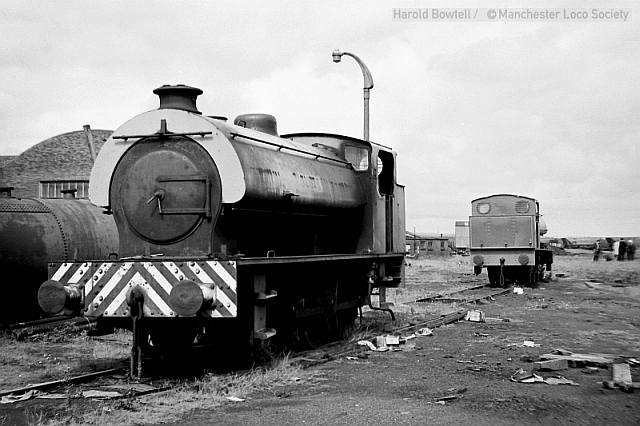
After Gresford’s closure it was transferred to Bold Colliery near St. Helens in April 1974, still named Alison. Harold Bowtell photographed it there on 16 August 1978. (Picture by courtesy of the Manchester Locomotive Society). In October 1979 it was sent to Walkden Workshops for overhaul, returning to Bold in early 1980. It was intended that it should take part in the 1980 Rainhill parade but when the time approached it was decided that the paintwork needed smartening up but this was not completed in time so Hudswell Clarke 1752/1944, also at Bold Colliery and by that time named Robert substituted in the parade. When Alison was outshopped from Walkden in 1980 as the last steam loco to be overhauled there, it had been renamed Joseph after the Workshops manager, Joseph Cunliffe.
It worked at Bold Colliery until about 1984, increasingly intermittently towards the end. I believe that the underfeed stoker was removed at some stage during its time with the NCB and the distinctive wide chimney cowling associated with the Hunslet 1960s rebuilds was replaced by a normal one during its time at Bold which may have meant that the associated Kylpor blastpipe arrangement had also been removed. However, the holes in the lower firebox sides which were part of the gas-producer system remained whilst at Bold, probably serving no purpose, but I see no sign of them in pictures taken since preservation. In the picture taken at Gresford, the fire can be seen through one of the holes immediately ahead of the cab front.
Following its service with the NCB, it initially went to the Chatterley Whitfield Mining Museum, followed by spells on several heritage railways including a period on the East Lancs Railway where it once again carried the name Sapper. I believe it is currently on the Avon Valley Railway. Whilst on the East Lancs Railway at least, it ran with a wide chimney cowling once again.
North Wales Coast home page | Archive | Previous Notice Board